An Izmiri Camel Herder in The Wild West
- Written by Admin TOA
- Published in Interesting Facts
The US, which was victorious in the Mexican War between 1846-1848, added what are now the states of Arizona, California, Nevada, Utah, Colorado, and New Mexico to its lands. These new lands, which measured 529 thousand square miles, gained even more in importance when, in 1849, gold was discovered in the West.
A whole new set of difficulties were presented to the federal government, in terms of new research groups to head out to the West, tranportation problems, and matters of land protection. Also, it was now necessary to be able to reach California from Texas.
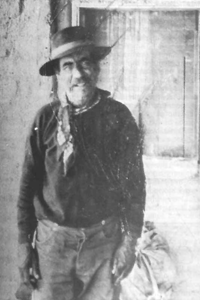
The final photograph taken of Haci Ali taken in summer of 1896 by Mr.Ross from Phoenix, Arizona.
An idea on how to reach the West which had never occured to anyone before came to the mind of Defense Secretary Jefferson Davis: Camels. Davis managed to convince the US Congress to approve a 30 thousand dollar budget for the purchase of camels. It was decided that the "Camel Military Corps" would then be formed.
But there were no camels at that time in the US. How would these desert animals be procured then? On this front, the Ottoman Empire, which had fought the Russians during the 1850's in the Crimea, came to mind. And so in 1855, the US ship "Supply" set sail, with David Dixon Parker at its helm. Joining him was military Major Henry Wayne, who was to head up the brigade that would be formed with the camels to be purchased.
Wayne and Parker examined the camels that had been used by the Ottomand in the Crimean War. They asked the Ottoman Sultan at the time, Abdulmecid II, to give them permission to buy the camels, and to donate them two camels as a gift. Sultan Abdulmecid II did in fact give Wayne and Parker two camels as a gift, arranging for the Ottoman side to pay for the two animals. The US delegation, having bought 33 camels in total from Turkey, returned to the US, landing at in February 1856 at the Texas Port of Indianola. On that day, nearly 100 camels, from Egypt, Mongolia, and Anatolia, set foot on US soil.
HACI ALI AND HIS FRIENDS
The purchase of the camels was not the end of this business however. There was an immediate need for camel herders who would "understand the language of the camels." Thus Haci Ali, George Caralambo, and a group of their friends were also hired and included on the American military ship "Supply."
The person with the most interesting life story on the military ship "Supply" was doubtless Haci Ali, who had previously served the French military in Algeria. Haci Ali had been born of Greek and Syrian parentage in Izmir. His real name was Philip Tedro. After converting to Islam, he visited Mecca and changed his name to Haci Ali.
Of all the camel herders who traveled with the US military expedition at this time, only George Caralambo (Greek George) and Haci Ali stayed on in the US afterwards. The rest all returned to their countries.
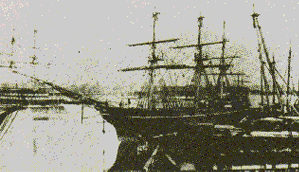
The US navy ship
Haci Ali, who educated the soldiers in the US Army on how to take care of the camels, and how to load them up, soon saw his name evolve into something entirely different, due to pronounciation. In time, he became "Hi Jolly." The camels that had been brought over were used on exploratory missions and in carrying goods, mail, and other items from Texas to the West.
The exploratory mission called the "Beale Expedition" used these camels as carriers in the project to discover a passable road from Arizona to the Pacific. And Haci Ali worked as a camel herder during this expedition, earning $15 a month. Haci Ali, who continued to serve the US military from time to time, worked as a miner when not in service to the army, and finally became a US citizen in 1857.
CAMELS AUCTIONED OFF
Despite the fact that Defense Secretary John Floyd requested in 1858 that 1,000 more camels be purchased, this project never came to fruition. The final dissolution of the "Camel Military Corps" occured with the break out of Civil War between the North and the South in the US. Thus 46 of the camels that Haci Ali had looked after were sold at an open auction in February 1864, while the remaining 66 camels were auctioned off in March of 1866. Some of the camels were purchased by circus managers, while a few escaped into the deserts of theWest. Of those who escaped into the deserts, some were killed by miners, while others by hunters looking for wild animals to shoot.
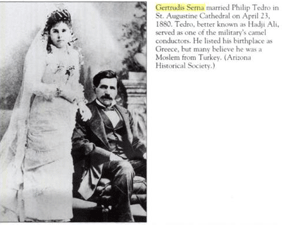
A wedding photograph of Haci Ali and his wife, from Jane Eppinga's Images of America Tucson, Arizona book.
MARRIED LIFE
Haci Ali, who kept a few of the auctioneed camels for himself, carried on transportation work with them between the Colorado River and the East Coast. Seeing that he was not making much of a profit, he left his remaining camels in the desert area around Gina Bend.
In 1880, Haci Ali married Gertrude Serna in Tuscon, Arizona . Later, they moved to the town of Quartzsite in Arizona. There, they had two daughters, Amelia and Herminia. Despite the fact that Haci Ali returned to gather up the remaining camels in the Arizona town of Ajo, he was not able to attain his dream. Supported until his death by merchant Mike Welz and his friends, Haci Ali also asked Arizona Congressmen Mark Smith to help him receive a pension from the US Army, but he was not successful in this endeavor.
The dead body of Haci Ali was found clasping the neck of a camel. He had returned to the desert lands between the Colorado River and Wickenburg in search of his camels. Haci Ali was 73 years old when he died in 1902, and he believed that there were still a few camels roaming around in the region. In fact, the last "wild camel" was captured in Arizona in 1946. The very latest report of a "wild camel sighting" was noted in Baja, California in 1956. One of the camels that Haci Ali had looked after died in the Garfield Zoo in Los Angeles in 1934. This last camel was 80 when it finally died.
HIS MEMORY LIVES ON IN FESTIVALS AND COUNTRY MUSIC
Haci Ali, who had served as an exploration guide for the military, a camel herder, and a miner, had brought his children up as Muslims. As one of the most prominent figures in early explorations of the West, Haci Ali had also been a subject of American folk songs, and had also popped up in Hollywood films. A song by the New Christy Minstrels in the 1950s called "Hi Jolly the Camel Driver" was about Haci Ali's days as a camel tender.
33 years after Haci Ali's death, there was a pyramid-shaped monument to him built where he was buried in the Arizona town of Quartzsite. The monument was built by the Arizona Highway Department. Decorating the monument was a metal figure of a camel. Every year on January 10, there is still a memorial "Camelmania: Hi Jolly Daze Parade" which takes place in memory of Haci Ali, sponsored by the Quartzsite Chamber of Commerce. The tombstone at his grave reads "The final campsite of Hi Jolly."
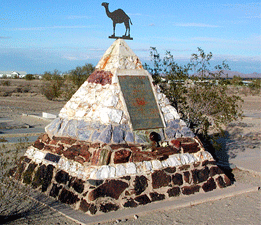
Gravesite of Haci Ali, in Quartzside, Arizona.
THE FILM ON HACI ALI'S LIFE: THE HEROIC SHERIFF
The first news of Haci Ali's life was made public in Turkey in a newspaper article by journalist Murat Bardarci. The story caught the attention of Turkish filmmakers Cengiz Ketenci and Sahin Alparslan. These filmmakers, who struck an agreement with film scenario writer Yigit Guralp, then decided on Yucel Yolcu as their director. The film, which to include both Turkish and American actors, is still going through casting procedures in both Turkey and the US.
The Turkish film production studio Istanbul Mass Media will be shooting the film on Haci Ali's life, to be entitled "Kahraman Serif," or "The Heroic Sheriff" in the historical Colorado town of Buckskin Joe. The film's American partner is Producer Group Studio's, from Colorado Springs.
THE FILM’S STORY
Producers of "The Heroic Sheriff" say they want to make an entertaining cowboy film, which is why they may not stay completely true to Haci Ali's life story. The real story of Haci Ali's life is going to come to the screen first as a documentary. The cinema film will be the next step, after this documentary.
Shooting for "The Heroic Sheriff" will begin this July, and plans are to have the film in cinemas by early 2008. The film will tell the story of the journey from Ottoman lands to the US, as well as the stories of three Ottoman citizens, each different from one another, who accompany the camels. In the film scenario, the heroes (the three Ottoman citizens) bring the camels to Texas to sell them, and once there, the US government buys 29 of them, but refuses one of them based on its ill health. The three Ottoman citizens then return to the Ottoman Empire to bring back the payment for the 29 camels, and to return the one ill camel. But while sleeping on the banks of a river before returning, the three are robbed.
Knowing that they can't return to tell the Ottoman Sultan this bad news, the three immediately go looking for the thieves in the nearest town. This town is a lawless place typical of the Wild West stories. The three Turks waste no time getting to work in this town, where the sheriff is an old man who has trouble enforcing the law.
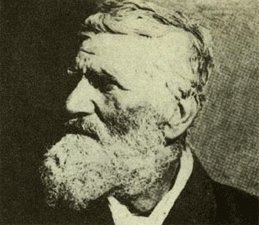
George Caralambo, another camel herder.
The three Turks are busy searching for their camels, while offering up big money for the bandits who stole their goods. They become the nightmare of the thieves, and the favorites of the elderly sheriff and his beautiful daughter. Just as they finally get back their money and are set to return though, the old sheriff is murdered, and the plans of the three Turks are disrupted. They accept the request by the sheriff's distraught daughter that one of them stay on as the new sheriff of the town.
The three Ottomans, before returning to their lands, face the final giant task of saving the town itself. Filmmaker Sahin Alparslan says that the fact that stories about the first Turks in America are not known very well made the idea of making this film even more attractive. Alparslan notes that the film gives a message of peace, justice and order, as the three Ottomans save the town they are in from bandits and lawlessness. He notes that the plans are to have "The Heroic Sheriff" enter cinemas in eight different countries simultaneously.
Film scenario writer Yigit Guralp is of the belief that a new door into different realms has been opened, especially for those who think that Turkish films have run out of new topics. Guralp, who wrote the script for "Sinav," notes that while Western style films were shot in the Turkish film industry between 1965-1972, not one of them offered the kind of story that "The Heroic Sheriff" does.
Cengiz Ketenci, another filmmaker, notes that civilizations are always shifting, and that it was important to tell the story of a country just trying to stand up on its legs during a period of the Ottoman Empire's decline. Ketenci, commenting on interest shown in Turkish-made films, said "Turkish cinema should return to its roots, and should bring stories that concern Turkey's own history to the viewers. The individuals who came out of the consumer society in the 1980s have returned to their origins."
(March 2007, 24th Issue)
Last modified onSaturday, 06 May 2017 10:07
Latest from Admin TOA
- From Dream to Reality, from Muş to Illinois: Zellano Home, the Largest Furniture Store Under One Roof in the USA!
- 300 migrants to be housed at shuttered Catholic church on Northwest Side in Chicago
- Turkish Stand-Up Sensation Hasan Can Kaya Embarks on U.S. Tour with Art Evi Production, in212 Production, and TAAS New York
- "Lean Startup, To Lean Company, To Rich Exit" by Dr. Kenan Sahin is released with Forbes Books
- LOSEV USA Ramadan Campaign Let the Children Heal First with Your Ramadan Donations
